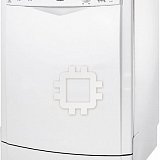Indesit DFG 26B10 EU: инструкция
Раздел: Бытовая, кухонная техника, электроника и оборудование
Тип: Посудомоечная Машина (60 См)
Инструкция к Посудомоечной Машиной (60 См) Indesit DFG 26B10 EU
Характеристики, спецификации

Operating instructions
Contents
Product Fiche, 2
Precautions and advice, 3
General safety
Disposal
Saving energy and respecting the environment
Installation and Assistance, 4-5
Positioning and levelling
Connecting the water and electricity supplies
Advice regarding the first wash cycle
Technical data
Assistance
Description of the appliance, 6
Overall view
Control panel
Loading the racks, 7-8
Lower rack
Cutlery basket
Upper rack
Adjusting the upper rack
Start-up and use, 9
Starting the dishwasher
Measuring out the detergent
Wash cycles, 10
Table of wash cycles
Special wash cycles and Options, 11
Rinse aid and refined salt, 12
Measuring out the rinse aid
Measuring out the refined salt
Care and maintenance, 13
Shutting off the water and electricity supplies
Cleaning the dishwasher
Preventing unpleasant odours
Cleaning the sprayer arms
Cleaning the water inlet filter
Cleaning the filters
Leaving the machine unused for extended periods
Troubleshooting, 14
DFG 26B10
DISHWASHER
TR
Türkçe,
29
ES
RU
KZ
Русский, 43
Қазақша, 59
Español, 15
English, 1
EN

EN
2
Product Fiche
Brand
INDESIT
Model
DFG 26B10
Rated capacity in standard place settings (1)
13
Energy efficiency class on a scale from A+++ (low consumption) to D (high consumption)
A+
Energy consumption per year in kWh (2)
295.0
Energy consumption of the standard cleaning cycle in kWh
1.04
Power consumption of the off-mode in W
0.5
Power consumption of the left-on mode in W
5.0
Water consumption per year in litres (3)
3080.0
Drying efficacy class on a scale from G (low efficacy) to A (high efficacy)
A
Programme time for standard cleaning cycle in minutes
190
The duration of the left-on mode in minutes
10
Noise in dB(A) Re 1pW
51
Built-in model
NO
NOTES
1) The information on the label and fiche relates to the standard cleaning cycle, this programme is suitable to clean normally
soiled tableware and it is the most efficient programme in terms of combined energy and water consumption. The standard
cleaning cycle corresponds to the Eco cycle.
2) Based on 280 standard cleaning cycles using cold water fill and the consumption of the low power modes. Actual energy
consumption depends on how the appliance is used.
3) Based on 280 standard cleaning cycles. Actual water consumption depends on how the appliance is used.
Product fiche

EN
3
*
Only available in selected models.
This appliance was designed and manufactured
in compliance with international safety standards
The following information has been provided for
safety reasons and should therefore be read
carefully.
Keep this instruction manual in a safe place for future
reference. If the appliance is sold, given away or
moved, please ensure the manual is kept with the
machine.
Please read these instructions carefully: they contain
important information on installation, use and safety.
This appliance is designed for domestic use or
similar applications, for example:
- staff kitchen areas in shops, offices and other work
environments;
- farmhouses;
- use by guests in hotels, motels and other residential
settings;
- bed & breakfasts.
General safety
• The appliance should not be operated by people
(including children) with reduced physical,
sensory or mental capacities, or by inexperienced
people who are not familiar with the product,
unless supervision or instructions on how to
use it are provided by someone who assumes
responsibility for their safety.
• An adult must supervise children at all times to
prevent them from playing with the appliance.
• The appliance was designed for domestic
use inside the home and is not intended for
commercial or industrial use.
• The appliance must be used by adults only to
wash domestic crockery in accordance with the
instructions in this manual.
• The appliance must not be installed outdoors,
even in covered areas. It is extremely dangerous
to leave the machine exposed to rain and storms.
• Do not touch the appliance when barefoot.
• When unplugging the appliance always pull the
plug from the mains socket. Do not pull on the
cable.
• The water supply tap must be shut off and the
plug should be removed from the electrical socket
before cleaning or maintaining the appliance.
• If the appliance breaks down, do not under any
circumstances touch the internal parts in an
attempt to perform the repair work yourself.
• Do not lean or sit on the open door of the
appliance: this may cause the appliance to
overturn.
• The door should not be left open as it may create
a dangerous obstacle.
• Keep detergent and rinse aid out of reach of
children.
• The packaging material should not be used as a
toy for children.
Disposal
• Disposal of packaging material: observe local
legislation so that the packaging may be reused.
• The European Directive 2012/19/EU relating
to Waste Electrical and Electronic Equipment
(
WEEE
) states that household appliances should
not be disposed of using the normal solid urban
waste cycle. Exhausted appliances should be
collected separately in order to optimise the re-
using and recycling rate of the materials inside the
machine, while preventing potential damage to
the environment and public health. The crossed-
out dustbin symbol is marked on all products to
remind the owners of their obligations regarding
separated waste collection.
For further information relating to the correct
disposal of household appliances, owners may
contact the relevant public authority or the local
appliance dealer.
Saving energy and respecting the
environment
Saving water and energy
• Only begin a wash cycle when the dishwasher is
full. While waiting for the dishwasher to be filled,
prevent unpleasant odours using the Soak cycle
(see Wash cycles)
.
• Select a wash cycle that is suited to the type of
crockery and to the soil level of the crockery using
the Table of wash cycles:
- for dishes with a normal soil level use the Eco
wash cycle, which ensures low energy/water
consumption levels.
- If the load is smaller than usual activate the Half
Load option*
(see Start-up and use).
• If your electricity supply contract gives details of
electricity-saving time bands, run wash cycles
when electricity prices are lower. The Delayed
Start button *
(see Start-up and use)
helps you
organise the wash cycles accordingly.
Phosphate-free and chlorine-free detergents
containing enzymes
• We strongly recommend that you use detergents
that do not contain phosphates or chlorine, as
these products are harmful to the environment.
• Enzymes provide a particularly effective action at
temperatures around 50°C. As a result detergents
containing enzymes can be used in conjunction
with low-temperature wash cycles in order to
achieve the same results as a normal 65°C wash
cycle.
• To avoid wasting detergent, use the product in
appropriate quantities based on the manufacturer’s
recommendations, the hardness of the water,
the soil level and the quantity of crockery to
be washed. Even if they are biodegradable,
detergents contain substances which may alter
the balance of nature.
Precautions and advice
Оглавление
- Product fiche
- Precautions and advice
- Installation and Assistance
- Description of the appliance
- Loading the racks
- Start-up and use
- Wash cycles
- Special wash cycles and Options
- Rinse aid and refined salt
- Care and maintenance
- Troubleshooting
- Manual de Instrucciones
- Ficha del producto
- Precauciones y consejos
- Instalación y
- Descripción del aparato
- Cargar los cestos
- Puesta en funcionamiento y uso
- Programas
- Programas especiales y opciones
- Abrillantador y sal regeneradora
- Mantenimiento y cuidados
- Anomalías y soluciones
- Kullanım talimatları
- Ü rün bilgilerine
- Önlemler ve öneriler
- Kurulum - Yardım
- Yardım
- Cihazın açıklaması
- Rafların yerleştirilmesi
- Başlangıç ve kullanım
- Yıkama programları
- Özel yıkama devirleri ve Seçenekler
- Parlatıcı ve rafine tuz
- Bakım ve onarım
- Sorun Giderme
- Руководство по эксплуатации
- Предосторожности и рекомендации
- Установка
- Описание изделия
- Загрузите корзины
- Запуск и эксплуатация
- Программы
- Ополаскиватель и регенерирующая соль
- Техническое обслуживание и уход
- Неисправности и методы их устранения
- Сервисное обслуживание
- Пайдалану нұсқаулығы
- Сақтық шаралары мен кеңес
- Орнату - Көмек
- Көмек
- Құрылғы сипаттамасы
- Тартпаларды жүктеу
- Қосу және пайдалану
- Жуу циклдары
- Арнайы жуу циклдары мен опциялары
- Шаюға көмекші зат және тазаланған тұз
- Ақаулықтарды жою





